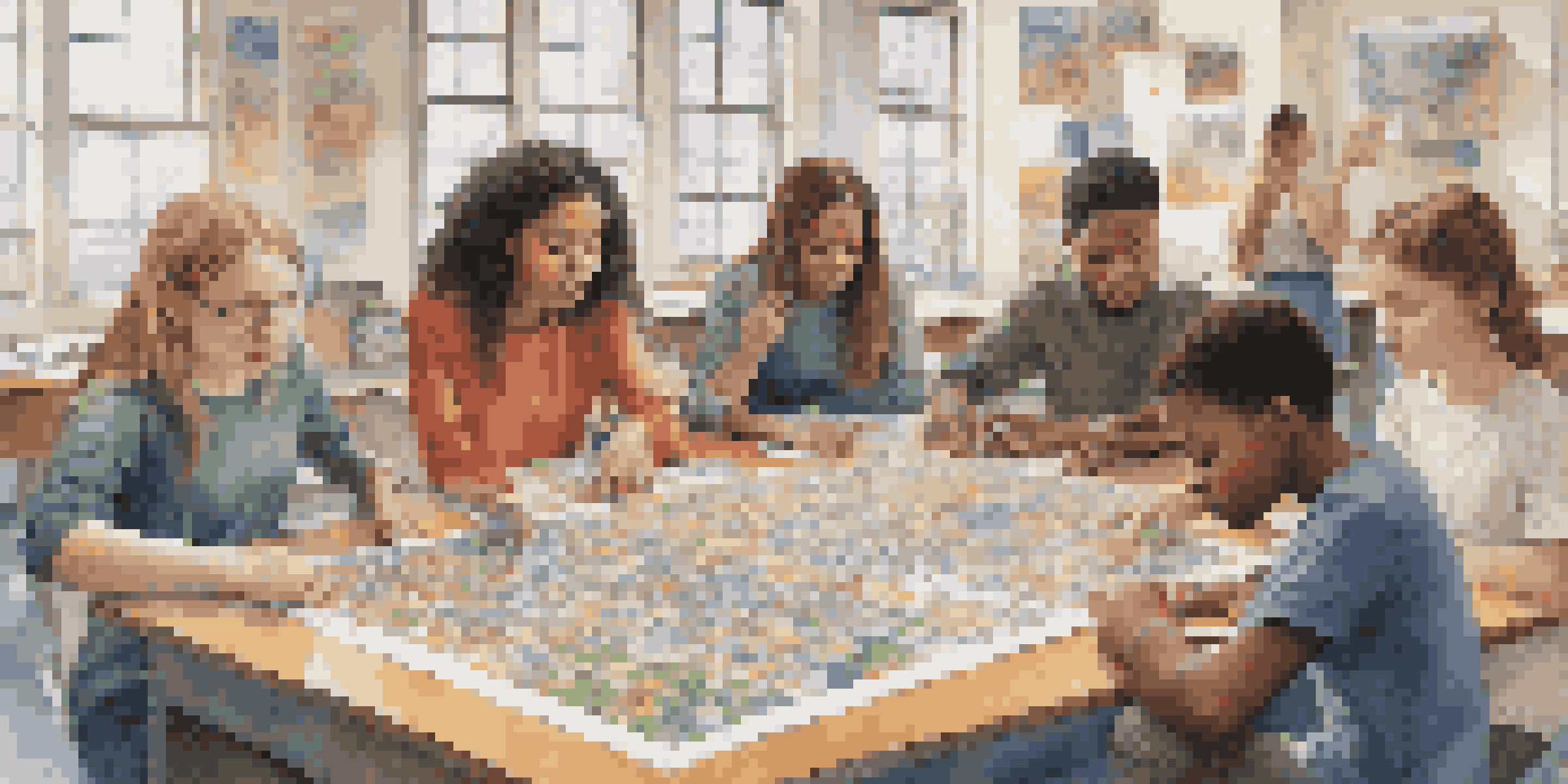The Role of Feedback in Strengthening Collaborative Learning

Understanding Collaborative Learning in Education
Collaborative learning is a dynamic educational approach where students work together to achieve shared learning goals. This method fosters a sense of community and encourages the exchange of ideas, making learning a collective experience. Imagine a group of friends tackling a challenging puzzle—each person contributes their unique perspective, ultimately leading to a more robust understanding of the task at hand.
The Importance of Feedback in Collaborative Settings
Feedback acts as the glue that holds collaborative learning together. It’s not just about giving grades; feedback provides insights into how well team members are communicating and working together. Think of it as a compass that helps guide a group through the learning process, ensuring they stay on the right track toward achieving their educational objectives.
Collaborative Learning Enhances Engagement
Collaborative learning fosters a sense of community among students, encouraging them to exchange ideas and work together towards common goals.
Types of Feedback That Foster Collaboration
There are various types of feedback that can enhance collaborative learning, including peer feedback, instructor feedback, and self-assessment. Each type plays a unique role; for instance, peer feedback encourages students to engage with one another's ideas and foster a supportive learning environment. It’s like having a sounding board—students can bounce ideas off each other, refining their thoughts in the process.
Encouraging a Feedback Culture in Learning Groups
Creating a culture that values feedback is crucial for effective collaboration. This involves establishing clear guidelines on how feedback should be given and received, ensuring that it is constructive and respectful. When students feel safe to express their thoughts, it’s akin to planting seeds in a garden; with the right nurturing, those seeds can blossom into innovative ideas and solutions.
Feedback is Key to Collaboration
Effective feedback serves as a guiding tool, helping students communicate better and stay aligned with their educational objectives.
Overcoming Barriers to Effective Feedback
Despite its benefits, feedback is often met with resistance due to various barriers, such as fear of criticism or lack of understanding of how to give helpful feedback. To overcome these challenges, educators can provide training on effective communication skills and create opportunities for practice. It’s like learning to ride a bike—you may wobble at first, but with guidance and practice, you’ll gain confidence and balance.
The Role of Technology in Feedback Mechanisms
In today's digital age, technology plays a pivotal role in facilitating feedback in collaborative learning. Tools like online forums, collaborative documents, and feedback apps provide platforms for continuous communication. Imagine having a virtual toolbox where students can access resources, share ideas, and receive real-time feedback—making the learning process more interactive and engaging.
Technology Boosts Feedback Opportunities
Digital tools facilitate continuous feedback in collaborative learning, making the process more interactive and accessible for students.
Measuring the Impact of Feedback on Learning Outcomes
Understanding the impact of feedback on collaborative learning outcomes is essential for continuous improvement. Educators can use surveys, reflection journals, and performance assessments to evaluate how feedback influences student engagement and achievement. This measurement is similar to checking a map during a road trip; it ensures you’re making progress towards your destination and helps identify areas that may need adjustment.
Conclusion: The Future of Collaborative Learning and Feedback
As education continues to evolve, the role of feedback in collaborative learning will remain critical. By prioritizing effective feedback mechanisms, educators can enhance student engagement, promote deeper learning, and prepare learners for future collaborative endeavors. Just as a well-tended garden flourishes, a learning environment that embraces feedback will yield rich, collaborative experiences for all involved.